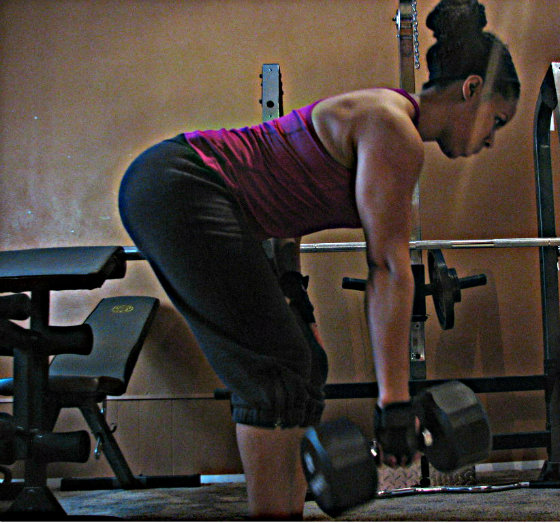
by Trish Adams | Dec 12, 2013 | Building Muscle
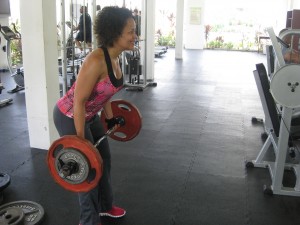
Nowadays, you can’t read about fitness without finding recommendations for women to lift weights…heavy weights. Statements like this might leave you scratching your head trying to determine just what qualifies as heavy lifting.
Shortly after Kiki and I met, I asked her how it was that she could eat so much more than me, yet be so much smaller than me. I have a good six inches on her and God knows how many pounds. Her response was simply that she lifted heavy weights. Well, it goes without saying that I immediately responded that I lifted heavy, too, and shared my stats. Kiki’s reply was simply a blank stare emoticon, which I imagined IRL her face looked more like Arnold from Different Strokes saying, ‘What you talking about Willis?’.
Like many women, I didn’t fully grasp the concept of lifting heavy. Sure, I trained with dumbbells and a barbell, but what constituted heavy weights? Was there some magic number I needed to aim for? Would I be considered a heavy lifter once able to squat or deadlift my body weight? Turns out that these were simply benchmarks or goals to strive for. The amount of weight that is heavy for you is relative and will, and should, change over time.
Resistance training is usually done with one or two goals in mind – increasing muscle size and/or strength. There are obviously other reasons, but suffice it to say that most folks fall into these categories. Muscle fibers grow in size and strength in response to training. To achieve this growth, you must train with enough resistance. But, how much is enough?
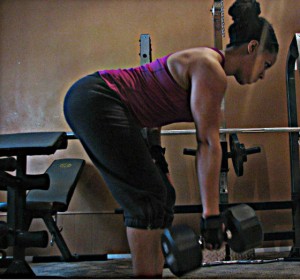
For your chosen rep range, typically 1-5 for strength gains and 6-10 for size, you’ll want to select a weight that allows you to complete the exercise with good form and full ROM (range of motion). The weight selection should be such that you are able to complete the set, but not be able to perform more than 1-2 additional reps.
Sounds simple enough, right? Not so fast. Our bodies are wonderfully adaptive organisms, so what was once ‘heavy’ may not be heavy for long. In order to continue generating physiological changes, you will want to increase the resistance. So, once you’re banging out 3 or more reps above your target, while maintaining proper form, take that as a sign to increase the load.
BENEFITS
The benefits of heavy lifting are many. I’ve highlighted a few below.
- Fat loss – Adding muscle, metabolically active tissue, to your body will increase your resting metabolism rate. That means, even when you’re sitting or sleeping, you’ll burn additional cals. For each pound of muscle added, you’ll burn up to an additional 50 cals each day. That may not sound like much, however, add 5-10 pounds of muscle over time and you’re looking at up to a few hundred cals burned a day without adding any extra activity!
- Attitude boost – Lifting something that you once thought was impossible, can bevery liberating and empowering. It will have you saying “Bring it!” to whatever challenge comes your way.
- Bone density – As we age we lose bone mass. Performing heavy weight bearing exercises helps to prevent bone loss and conditions like osteoporosis. Starting a heavy lifting program before bone loss sets in around age 40, gives you a leg up.
- Injury prevention – Stronger muscles and tendons promote protection and stability in the joints, which can help you avoid injury not only when exercising, but during every day activities as well.
- Strength – You’ll get stronger, plain and simple. Every day things like carrying the kids, hoisting groceries or, say, moving the couch, will become a breeze.
- Lean curves – Think rounded shoulders instead of slouchy, sloping ones. A firm and lifted derriere instead of a droopy one. Cardio nor barbie weights will get you that!
I hope this clears up heavy lifting a bit more for you. If not, drop us a comment – we love questions! And if you’re new to heavy lifting and need a workout program, check out our Beginner Strength Training Manual.

by EM2WL | Dec 10, 2013 | Testimonials, The Journey

Success found – losing weight and finding self-acceptance while increasing calorie intake!
March 1st 2012 I decided was going to make some changes in my life by losing weight and exercising. I weighed 255 lbs, my highest weight ever. I began logging on MFP and followed their recommendations of 1610 + exercise cals to lose 2 lbs a week. I wanted the weight off fast and at first it was. Even faster than 2 lbs a week. Which I now know means I had estimated my daily activity too low at sedentary. Every 10 lbs I lost MFP would prompt me to lower my cals. By June I was down over 30 lbs and eating 1420 + exercise cals. Then my weight-loss stalled. I was doing all the same things, exercising and eating, and yet I wasn’t losing weight. My energy seemed to be gone as well and worst of all my hair began to fall out. A lot. I basically lost about 1 1/2 inches from my hairline and the rest of my hair became frighteningly thin. I was scared. I had blood work done and everything came back normal. In my brain I couldn’t comprehend that I could be eating what I thought was so healthy and yet feeling bad and losing my hair. Something wasn’t right and everything was pointing to my diet.
By August I decided to up my cals to 1610 + exercise cals again. I also started taking a multivitamin with iron. I increased my protein to a minimum of 100 g a day. My energy came back and I began to lose weight again.
Something also changed in my thinking about this time. I realized that my focus should not be on what I can’t eat, what is not healthy, or what is bad…it should be about ADDING healthy nutritious food. My focus began to slowly shift from losing weight to being healthy. I liked feeling fit. I liked challenging my body to do things it couldn’t do before.
 In October I began a new 90 day workout program called Supreme 90. This was the toughest workout I had ever done, but I loved it. I loved the sense of accomplishment in completing each month. I also started to notice my appetite really starting to rev up, so I upped my cals again to 1700. I felt better and my workouts got better and better.
In October I began a new 90 day workout program called Supreme 90. This was the toughest workout I had ever done, but I loved it. I loved the sense of accomplishment in completing each month. I also started to notice my appetite really starting to rev up, so I upped my cals again to 1700. I felt better and my workouts got better and better.
In the midst of this the holidays showed up. I ate what I wanted, enjoyed my family and felt no guilt. Always in the past when I had “dieted” I would not allow myself to go off diet even for special occasions because I couldn’t trust myself to go back on my “diet.” How sad is that?
By the end of the program I had lost about 12 lbs and several inches from all over my body. Bringing my total weight loss to about 60 lbs. I had also upped my cals to 1800 + exercise cals when I began to feel hungry all the time. I was beginning to learn to listen to what my body was telling me!
Afterwards, I began to transition into heavy lifting. I had joined Eat More 2 Weigh Less and I was totally inspired by all the beautiful women there. My husband and I had found a great deal on Craigslist for an Olympic weight set and bench. My focus turned even more to what my body could do. I loved being able to lift more weight every week. I also started trying to learn more about how to eat to meet my strength goals. I’ve been challenged by Becca, Lucia, Kiki, Jennifer, Cheri and so many other wonderful women by their amazing examples of hard work and dedication. Thank you all.

Since May I have basically maintained my size and stayed within 5lbs of my low weight. I’m not really sure because I have stopped weighing myself. I’ve learned that the scale is a poor judge of my health, size, weight or even character. It’s a number that can’t measure my attitude or love for myself. And that has grown so much since I started this journey. I’ve learned perseverance, patience, dedication and I’ve also learned that I am much stronger than I ever thought. Not only physically but mentally. This past July I injured my back and was flat on my back for several days followed by about 6 weeks of slow recovery. It was hard, but I did what was best for my body and rested. I couldn’t lift and was able to only do light stretching and some low impact cardio, but I did what I could. I was tempted to drop my calories because I didn’t want to gain weight, but I also knew that I didn’t want to lose muscle or hamper my recovery, so I continued to eat about 2000 calories a day. I didn’t gain weight, I didn’t grow out of my clothes and when I could finally lift again I could even still bench press what I had been previously.
I have gone from a very tight size 22 jeans to a size 12-14 — losing weight by doing the opposite of what all the popular diets tell you to do. I’ve upped my calories. Seems counter intuitive but I’ve learned to listen to my body and trust what it is telling me. Am I recovering well from workouts? Am I feeling rested? What is my body craving and why? Are my lifts feeling strong and consistently getting stronger?

For me, those are all indicators that tell me if I am fueling my correctly. Food and my body are no longer the enemy to be subdued. Cravings are not a sign of weakness, they are my body talking to me. I move in a way that makes me feel happy. I lift because I love feeling strong. I eat food I love and that help fuel the wonderful machine that is my body. I’m proud of my thick thighs and booty that have more fat and excess skin than is “socially” acceptable. People may look at me and still see a fat woman, but that is ok, because I look in the mirror and love the woman looking back at me, for the first time ever. I don’t weigh myself because there is no scale that can measure that. I am free. Free from the voices in my head, on the magazines and TV that tell me I need to be less. I am enough…actually I am more than enough, I am perfectly and wonderfully made. Right now, not someday. I eat and exercise because I love myself. I love myself because I was first loved by Him who created me. Whatever size I am or become is just a result of the love I have for me and the love I have from Him. What an amazing place to be.
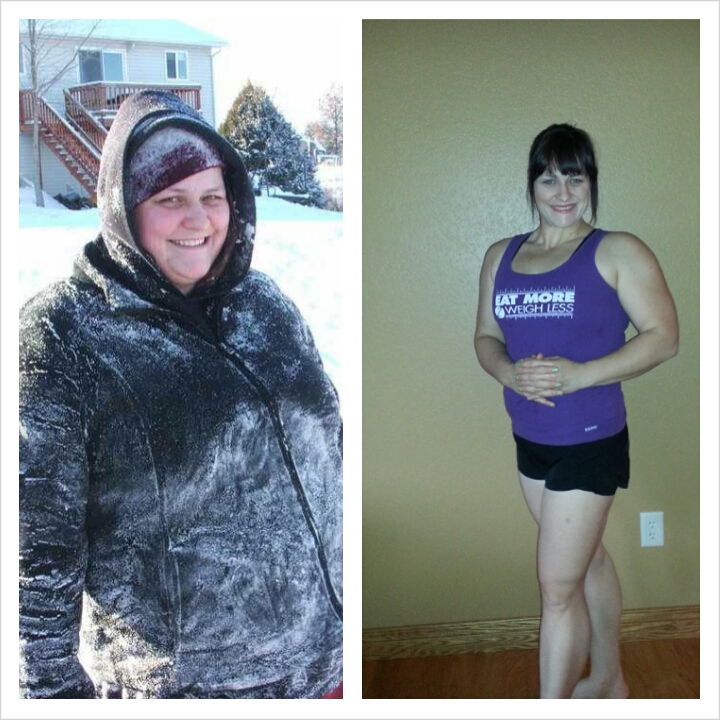
by | Dec 5, 2013 | Consistency, Increasing calories, Metabolism Reset, Motivation, Nutrition, Q & A
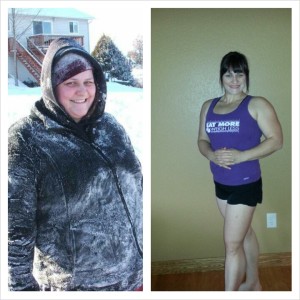 Many of our readers come to us seeking answers. They are beyond frustrated with dieting. They are have done everything “right” according to most of the information geared towards women. No one would ever question their determination. They have cut out most of their favorite foods and are barely eating enough calories to keep a sedentary 8 year old alive. They are working out daily, often as much as two hours a day or more. They pass on cake at their children’s birthday party and eat chicken breast and salad at the family barbeque while everyone else feasts on hamburgers and chips. They can’t remember the last time they enjoyed a nice restaurant meal and ordered what they actually wanted without guilt. They saw weight loss for awhile, but now everything seems to have stopped. No matter how much more they workout, or how much less they eat, they can’t seem to get the scale to move.
Many of our readers come to us seeking answers. They are beyond frustrated with dieting. They are have done everything “right” according to most of the information geared towards women. No one would ever question their determination. They have cut out most of their favorite foods and are barely eating enough calories to keep a sedentary 8 year old alive. They are working out daily, often as much as two hours a day or more. They pass on cake at their children’s birthday party and eat chicken breast and salad at the family barbeque while everyone else feasts on hamburgers and chips. They can’t remember the last time they enjoyed a nice restaurant meal and ordered what they actually wanted without guilt. They saw weight loss for awhile, but now everything seems to have stopped. No matter how much more they workout, or how much less they eat, they can’t seem to get the scale to move.
- Under these circumstances, a member of our team will often recommend a metabolism reset. If you’re curious as to just what this entails, check out this video where Kiki explains the basics.
The purpose of a metabolism reset is to give your body a break from the stress of dieting, to get used to eating an appropriate amount of food, and to provide some time to begin healing some disordered thoughts and attitudes about food that have likely surfaced as a result of restriction.
It isn’t hard to sell people on the reasons why they need to do a reset. But many of our readers want to know how long they should expect this process to last before they can get back to the whole fat loss party.
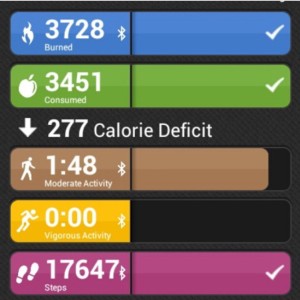 Under general circumstances, we will recommend a time frame of 8-12 weeks of consistently eating TDEE. After this time, most people can return to eating a small deficit (TDEE-15%) and they will see slow and steady fat loss.
Under general circumstances, we will recommend a time frame of 8-12 weeks of consistently eating TDEE. After this time, most people can return to eating a small deficit (TDEE-15%) and they will see slow and steady fat loss.
However, every person responds differently. The length of time required for a successful reset will depend greatly on the severity of restrictive dieting and how long the individual dieted. It is critical during this time that you trust the process and are willing to stick it out as long as it takes. Do not approach a metabolism reset as just another diet to try because you’ve tried everything else.
To someone who has spent a long time restricting food, a metabolism reset can sound really appealing. Eat lots of food, and fix my metabolism? Score!!! If you are thinking about doing a metabolism reset, it’s important that you approach it with both eyes wide open. Most people will gain some weight during this time. Many people will feel stuffed as they adjust to an increased quantity of food. Your friends and family may wonder why on earth you would do this. The thought of eating more food while not increasing your exercise will probably make you feel uncomfortable. Even a little anxious. You may feel out of control as the feelings of hunger return which have likely been suppressed due to dieting.
If you stick it out, you will be setting yourself up for a lifetime of future success. It is not easy! Our forums are filled with people who have walked this road ahead of you and are seeing fantastic results! Check out the many success stories those who have walked this road ahead of you and are reaping the rewards.
Consistency is the name of the game. Too often, we see people who approach a reset with excitement and determination. There is often a kind of “honeymoon period”- energy returns, new foods are being enjoyed, workouts are approached with a new-found intensity, sleep quality improves, and there is an overall feeling of wellness.
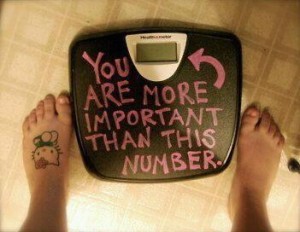
However, there tends to be a pretty significant water weight gain for many people here. When they start to notice that their pants are fitting tighter, or they see a few pounds weight gain, they may feel discouraged enough to go back to a few days of low-calorie eating. It is very important not to flip-flop back and forth between these two extremes. You need to give your body time to adjust to the new calorie level. Remember that the body is very good at making adaptations! Just as it was quick to adapt to the low calories, it will be relatively quick to adapt to higher calories! Remaining consistent and fighting through the hard days is all part of this process.
So how do you know when your reset is complete? Generally, if you are in a rush to get it over with so you can go back to dieting, that is probably a good sign you’re not quite there yet. Overcoming these mental challenges is such a key part of this. Being able to enjoy “normal” food without guilt is a good sign that you’re getting there!
If you had any symptoms of metabolic damage (hair loss, low body temperature, loss of menstruation, dizziness and/or fatigue), you should begin to see a turnaround. These are all signs that something is wrong, and rushing back to trying to lose fat before your body is ready is only going to sabotage your long-term success.
In the meantime, trust the process and take advantage of this time to focus on some goals, prioritizing your fitness and strength goals over fat loss. You might be surprised with how much you enjoy this time!
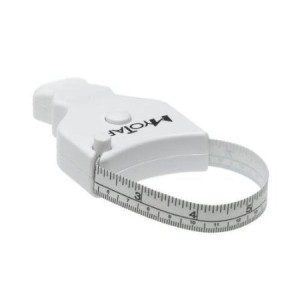
The measuring tape is one of our favorite tools for measuring progress.
Even though we generally discourage focusing on the scale, it is good to check in every once in awhile if you don’t allow it to stress you out. Seeing the weight gain level off and then stop completely is a good sign that the body has adjusted to a normal caloric intake. Of course, please make sure you are taking progress pictures and measurements along the way as well! They tend to be a much more significant marker of progress. As muscle is gained, you may notice that you are shrinking even if the scale does not agree! This is a great way to track trends in weight that we often recommend if you choose to weigh daily.
The bottom line: set a general time table, but be prepared to be flexible and trust the process. Every one will respond to a metabolism reset a little differently. Sticking it out and taking it slow will help you to meet your future fat loss goals!
Disclaimer: If you are dealing with clinical symptoms of disordered eating, please do yourself a favor and talk to a doctor or mental health professional. We are not doctors and you should not understand this to be medical advice.
 Becca is a busy wife and homeschooling mother to five children ages 5 to 13. About three years ago, she embarked on a journey to health and fitness that resulted in the loss of approximately 100 pounds. Today, she is a competitive powerlifter and strongwoman who loves ice cream and deadlifts. As an ISSA certified personal trainer, she is passionate about helping women to get started on a lifestyle of strength and fitness.
Becca is a busy wife and homeschooling mother to five children ages 5 to 13. About three years ago, she embarked on a journey to health and fitness that resulted in the loss of approximately 100 pounds. Today, she is a competitive powerlifter and strongwoman who loves ice cream and deadlifts. As an ISSA certified personal trainer, she is passionate about helping women to get started on a lifestyle of strength and fitness.
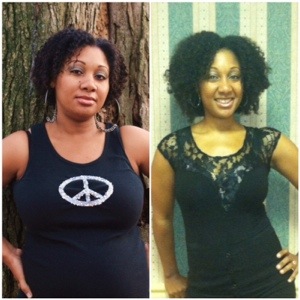
by EM2WL | Dec 3, 2013 | Building Muscle, Interviews/Guest Posts, The Journey

•How long have you been on this journey?
I’ve been EM2WL for about a year. I recently started my official “bulk” – eating at a surplus, with limited cardio, and weight training as my primary focus – in August 2013.
•When did you first learn that you needed to eat more to reach your goals? What was your original response?
I learned this last year after reading some of my MFP friends posts about TDEE. I was actually eating below my TDEE for a few months but didn’t know it. (I was eating approximately 1400-1600 calories daily, depending on my workout, but I should have been somewhere around 1950 calories.) I was nervous to increase my calories, especially since I still had about 10-15 more lbs to lose. But the risk of compromising my metabolism, plus I found myself getting hungrier, made me increase my calories. I did it slowly though, as I was very cautious. Each month, I increased my calories by 100 until I hit 2000. I continued to lose weight until I hit 2000, which was perfect for me because by that point, I had reached my weight loss goal and I was at maintenance.
• How did others around you act about your decision to discard the usual low cal methods for weight loss?
As I increased my calories from about 1600 to 2000 many of my close friends and MFP friends followed suit, especially when they saw that I was still losing weight. They experienced similar results. Now with my decision to bulk, I received mixed responses. Even split with health conscious folks – some gave me the “more power to you, but no way I’m trying that because I refuse to see the scale go up,” while others, primarily those that are about this weight lifting life, agreed “it’s the way to go if you want to put on muscle and transform your body.” Everyone was shocked to see me indulging in bread regularly!
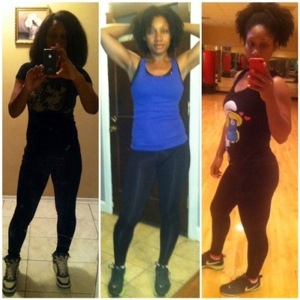
•How did your body react to the initial increase in cals?
Gains! In the gym and on the scale. My energy during my workouts skyrocketed. My bootcamp instructor noticed it immediately; I was able to keep up with the “stars” in the class. I was able to lift heavier and my endurance increased. I gained 1.25 lbs steadily for the first 2 months and went up a size in pants. Going into month three; the weight gain has stalled a bit.
•What results have you seen from sticking to it and “trusting the process?”
 The biggest change has honestly been my overall mood. Along with the increase in calories, I changed my macros. I used to carb cycle so my macros were 20c/40p/40f with 1-2 days a week where I would double my carb intake to about 200g (instead of the usual 70-100g). With the increase in carbs, came an increase in serotonin. And while I’m not doing a “dirty” bulk; I’m not as strict with my eating as I have been in the past (I was following paleo/primal), which has taken a lot of the stress out of eating, especially when I’m at a restaurant with my family and/or friends. So, overall, I’m a much happier person; my family and co-workers have even noticed it. People actually like to go out to eat with me now. We can all indulge in bread together!
The biggest change has honestly been my overall mood. Along with the increase in calories, I changed my macros. I used to carb cycle so my macros were 20c/40p/40f with 1-2 days a week where I would double my carb intake to about 200g (instead of the usual 70-100g). With the increase in carbs, came an increase in serotonin. And while I’m not doing a “dirty” bulk; I’m not as strict with my eating as I have been in the past (I was following paleo/primal), which has taken a lot of the stress out of eating, especially when I’m at a restaurant with my family and/or friends. So, overall, I’m a much happier person; my family and co-workers have even noticed it. People actually like to go out to eat with me now. We can all indulge in bread together!
The second biggest change I have seen is my body. When I lose weight I tend to look “straight” and immediately lose what little curves I have. Now my curves are accentuated and my muscles, particularly my biceps, are bigger. My shoulders are also more pronounced. I can’t fit any of my cap sleeve shirts now. And I love it. My quads are bigger than ever. And I finally have a tush!
•Can you describe your typical weekly workout schedule and a sample day of meals (or macros)?
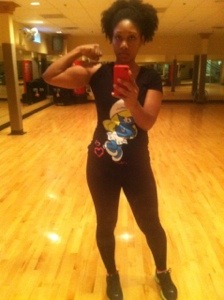 I weight train 4-5 days a week with about 2 hours of cardio per week and eat about 2300-2500 calories on average, loosely following Tosca Reno’s eat clean plan. Macros 40c/30p/30f
I weight train 4-5 days a week with about 2 hours of cardio per week and eat about 2300-2500 calories on average, loosely following Tosca Reno’s eat clean plan. Macros 40c/30p/30f
Typical workout schedule
Monday – Back and Cardio (Kickboxing)
Tuesday – Chest and Shoulders
Wednesday – Legs
Thursday – Biceps and Triceps and Core (Jillian Michael’s 30 minute ab workout)
Friday – Rest Day
Saturday – Boot Camp (45-50 minute full body circuit workouts with weights, 5-10 minutes warm-up/cool down/stretching)
Sunday – Rest Day
Sample day of eating
Breakfast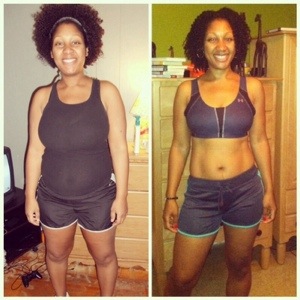
1 C Oats with blueberries and walnuts
4 egg whites
1 slice nitrate free bacon
Snack
1 oz planters mixed nuts
Lunch
6-8 oz grilled chicken breast seasoned with Mrs. Dash fiesta lime seasoning
1 C sautéed kale with sliced garlic and ½ TBSP olive oil
1 medium baked yam with cinnamon
Snack
1 medium granny smith apple with 1 TBSP all natural peanut butter or almond butter
1 hardboiled egg
 Snack (pre-workout meal)
Snack (pre-workout meal)
Ezekiel English muffin with 1.5 TBSP cream cheese and ½ TBSP low sugar smuckers strawberry preserves
Snack (post-workout meal)
2 scoops protein powder mixed with 3 C baby spinach, ½ C vanilla unsweetened almond milk
Dinner
6 oz ground turkey mixed with celery, peppers, taco seasoning, kidney beans, shrimp
½ C marinara sauce
1 medium baked yam with cinnamon
Snack
Chocolate chip cookie dough Quest Bar
In the spirit of transparency, on the weekends and during my TOM, my nutrition isn’t as clean as I’d like:
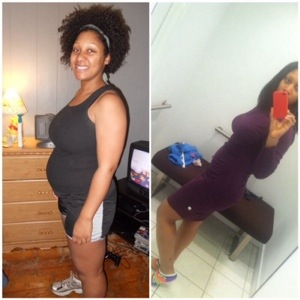 Breakfast is usually gluten free protein pancakes with dark chocolate chips, butter, and 100% maple syrup or IHOP pancakes or a Dunkin Donuts croissant with egg and cheese with a glazed sour cream donut
Breakfast is usually gluten free protein pancakes with dark chocolate chips, butter, and 100% maple syrup or IHOP pancakes or a Dunkin Donuts croissant with egg and cheese with a glazed sour cream donut
- Lunch may be a bacon cheeseburger with ketchup and pickles and sweet potato fries with bbq sauce (Red Robin, Chili’s, or TGI Friday’s)
- Dinner is usually pizza (local pizzeria or Pizza Hut) or shrimp fried rice with a shrimp roll (Chinese local takeout) with a cup of Breyer’s butter pecan ice cream and two (warm) Mrs. Field’s semi-sweet chocolate cookies for dessert
I have no issues going to the gym and getting my workouts in; in fact, I have to make sure I keep track of my workouts to make sure I take 2 rest days. I would have no problem working out 7 days a week (but we all know muscles grow during rest periods so I make sure I rest 1-2 days a week, sometimes three if I’m suffering from DOMS). Nutrition is where I struggle and work to improve on a daily basis.
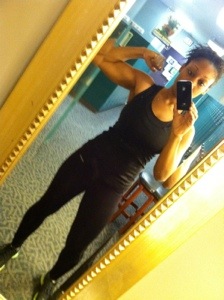 •So…what led to the bulking decision?
•So…what led to the bulking decision?
After the birth of my third child who is currently 21 months (my twins are 8 years old), I gained 70 lbs. I lost all the baby weight and dropped down from a size 16 to a size 4. I was content with my size but not my body composition. Even though I was size four, I was still 26% body fat and really didn’t have much muscle definition. So, I decided to bulk in an effort to gain muscle and muscle definition and increase my strength. I also decided to bulk because the carb cycling was making me crazy. I was excited to switch my macros, making complex carbs my highest macro percentage.
•What changes are you hoping to see from bulking?
muscle, muscle, muscle!
•What are your biggest bulking fears?
gaining too much fat in my midsection and not enough muscle everywhere else
•Do you have a specific look you would like to attain, or are inspired by?
My Fitspo?
Alicia Harris
Katie Chung Hua
Lindsay Kaye Miller
Britney Spears (MTV Awards 2000)
Ruthie Bowles
Kiki <what’s your last name?
Ultimate personal goal would be 18% body fat
•Any parting words of encouragement to those who are new to eating more, or struggling with the decision of whether or not to fuel properly?

I’m one of those people that love to try different eating plans, fitness workouts, etc. to see what works for my body and how my body will respond. Everyone is different; therefore, our bodies will respond differently to eating plans, macros, and workouts. If you were willing to try low-carb, low-cal, primal, paleo, etc. and were unsuccessful, you might as well as try the EM2WL method and see how your body responds. Do research, connect with other EM2WL folks, and ask questions! And once you start, before you decide to abort the process, give yourself 2-3 months to adjust/respond and take notice to the changes. Take pictures, take pictures, take pictures – before and after! You will be surprised and pleased with the way your body transforms and the gains that you will make in the gym. And if you’re not happy with it, try something else and keep trying/tweaking until you find the plan that works for YOU.
•Thanks SO much for your time! How can our readers hear from/see more of you?
IG – http://instagram.com/erikasagekelley

Have an EM2WL transformation to share? Willing to let us tag along on your journey? We’d love to see it! Be featured on our Transformation/Journey page by submitting your story to Success@EM2WL.com




























Recent Comments